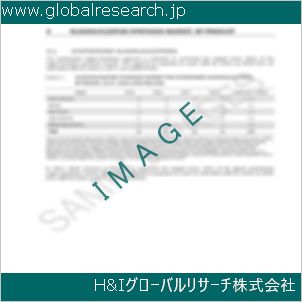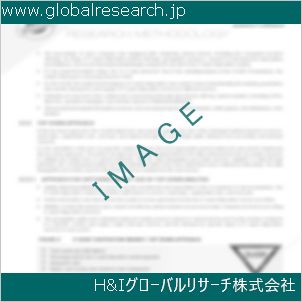Table of Contents
1 Industry Overview of Leadstearate
1.1 Definition and Specifications of Leadstearate
1.1.1 Definition of Leadstearate
1.1.2 Specifications of Leadstearate
1.2 Classification of Leadstearate
1.3 Applications of Leadstearate
1.3.1 Nuclear Application
1.3.2 Non-Nuclear Application
1.4 Industry Chain Structure of Leadstearate
1.5 Industry Overview and Major Regions Status of Leadstearate
1.5.1 Industry Overview of Leadstearate
1.5.2 Global Major Regions Status of Leadstearate
1.6 Industry Policy Analysis of Leadstearate
1.7 Industry News Analysis of Leadstearate
2 Manufacturing Cost Structure Analysis of Leadstearate
2.1 Raw Material Suppliers and Price Analysis of Leadstearate
2.2 Equipment Suppliers and Price Analysis of Leadstearate
2.3 Labor Cost Analysis of Leadstearate
2.4 Other Costs Analysis of Leadstearate
2.5 Manufacturing Cost Structure Analysis of Leadstearate
2.6 Manufacturing Process Analysis of Leadstearate
3 Technical Data and Manufacturing Plants Analysis of Leadstearate
3.1 Capacity and Commercial Production Date of Global Leadstearate Major Manufacturers in 2023
3.2 Manufacturing Plants Distribution of Global Leadstearate Major Manufacturers in 2023
3.3 R&D Status and Technology Source of Global Leadstearate Major Manufacturers in 2023
3.4 Raw Materials Sources Analysis of Global Leadstearate Major Manufacturers in 2023
4 Capacity, Production and Revenue Analysis of Leadstearate by Regions, Types and Manufacturers
4.1 Global Capacity, Production and Revenue of Leadstearate by Regions 2019-2024
4.2 Global and Major Regions Capacity, Production, Revenue and Growth Rate of Leadstearate 2019-2024
4.3 Global Capacity, Production and Revenue of Leadstearate by Types 2019-2024
4.4 Global Capacity, Production and Revenue of Leadstearate by Manufacturers 2019-2024
5 Price, Cost, Gross and Gross Margin Analysis of Leadstearate by Regions, Types and Manufacturers
5.1 Price, Cost, Gross and Gross Margin Analysis of Leadstearate by Regions 2019-2024
5.2 Price, Cost, Gross and Gross Margin Analysis of Leadstearate by Types 2019-2024
5.3 Price, Cost, Gross and Gross Margin Analysis of Leadstearate by Manufacturers 2019-2024
6 Consumption Volume, Consumption Value and Sale Price Analysis of Leadstearate by Regions, Types and Applications
6.1 Global Consumption Volume and Consumption Value of Leadstearate by Regions 2019-2024
6.2 Global and Major Regions Consumption Volume, Consumption Value and Growth Rate of Leadstearate 2019-2024
6.3 Global Consumption Volume and Consumption Value of Leadstearate by Types 2019-2024
6.4 Global Consumption Volume and Consumption Value of Leadstearate by Applications 2019-2024
6.5 Sale Price of Leadstearate by Regions 2019-2024
6.6 Sale Price of Leadstearate by Types 2019-2024
6.7 Sale Price of Leadstearate by Applications 2019-2024
6.8 Market Share Analysis of Leadstearate by Different Sale Price Levels
7 Supply, Import, Export and Consumption Analysis of Leadstearate
7.1 Supply, Consumption and Gap of Leadstearate 2019-2024
7.2 Global Capacity, Production, Price, Cost, Revenue, Supply, Import, Export and Consumption of Leadstearate 2019-2024
7.3 USA Capacity, Production, Price, Cost, Revenue, Supply, Import, Export and Consumption of Leadstearate 2019-2024
7.4 EU Capacity, Production, Price, Cost, Revenue, Supply, Import, Export and Consumption of Leadstearate 2019-2024
7.5 China Capacity, Production, Price, Cost, Revenue, Supply, Import, Export and Consumption of Leadstearate 2019-2024
7.6 Japan Capacity, Production, Price, Cost, Revenue, Supply, Import, Export and Consumption of Leadstearate 2019-2024
8 Major Manufacturers Analysis of Leadstearate
8.1 Manufacturer One
8.1.1 Company Profile
8.1.2 Product Picture and Specifications
8.1.2.1 Type I
8.1.2.2 Type II
8.1.2.3 Type III
8.1.3 Capacity, Production, Price, Cost, Gross and Revenue
8.1.4 Contact Information
8.2 Manufacturer Two
8.2.1 Company Profile
8.2.2 Product Picture and Specifications
8.2.2.1 Type I
8.2.2.2 Type II
8.2.2.3 Type III
8.2.3 Capacity, Production, Price, Cost, Gross and Revenue
8.2.4 Contact Information
8.3 Manufacturer Three
8.3.1 Company Profile
8.3.2 Product Picture and Specifications
8.3.2.1 Type I
8.3.2.2 Type II
8.3.2.3 Type III
8.3.3 Capacity, Production, Price, Cost, Gross and Revenue
8.3.4 Contact Information
8.4 Manufacturer Four
8.4.1 Company Profile
8.4.2 Product Picture and Specifications
8.4.2.1 Type I
8.4.2.2 Type II
8.4.2.3 Type III
8.4.3 Capacity, Production, Price, Cost, Gross and Revenue
8.4.4 Contact Information
8.5 Manufacturer Five
8.5.1 Company Profile
8.5.2 Product Picture and Specifications
8.5.2.1 Type I
8.5.2.2 Type II
8.5.2.3 Type III
8.5.3 Capacity, Production, Price, Cost, Gross and Revenue
8.5.4 Contact Information
…
9 Marketing Trader or Distributor Analysis of Leadstearate
9.1 Marketing Channels Status of Leadstearate
9.2 Traders or Distributors with Contact Information of Leadstearate by Regions
9.3 Ex-work Price, Channel Price and End Buyer Price Analysis of Leadstearate
9.4 Regional Import, Export and Trade Analysis of Leadstearate
10 Industry Chain Analysis of Leadstearate
10.1 Upstream Major Raw Materials Suppliers Analysis of Leadstearate
10.1.1 Major Raw Materials Suppliers with Contact Information Analysis of Leadstearate
10.1.2 Major Raw Materials Suppliers with Supply Volume Analysis of Leadstearate by Regions
10.2 Upstream Major Equipment Suppliers Analysis of Leadstearate
10.2.1 Major Equipment Suppliers with Contact Information Analysis of Leadstearate
10.2.2 Major Equipment Suppliers with Product Pictures Analysis of Leadstearate by Regions
10.3 Downstream Major Consumers Analysis of Leadstearate
10.3.1 Major Consumers with Contact Information Analysis of Leadstearate
10.3.2 Major Consumers with Consumption Volume Analysis of Leadstearate by Regions
10.4 Supply Chain Relationship Analysis of Leadstearate
11 Development Trend of Analysis of Leadstearate
11.1 Capacity, Production and Revenue Forecast of Leadstearate by Regions and Types
11.1.1 Global Capacity, Production and Revenue of Leadstearate by Regions 2024-2029
11.1.2 Global and Major Regions Capacity, Production, Revenue and Growth Rate of Leadstearate 2024-2029
11.1.3 Global Capacity, Production and Revenue of Leadstearate by Types 2024-2029
11.2 Consumption Volume and Consumption Value Forecast of Leadstearate by Regions, Types and Applications
11.2.1 Global Consumption Volume and Consumption Value of Leadstearate by Regions 2024-2029
11.2.2 Global and Major Regions Consumption Volume, Consumption Value and Growth Rate of Leadstearate 2024-2029
11.2.3 Global Consumption Volume and Consumption Value of Leadstearate by Types 2024-2029
11.2.4 Global Consumption Volume and Consumption Value of Leadstearate by Applications 2024-2029
11.3 Supply, Import, Export and Consumption Forecast of Leadstearate
11.3.1 Supply, Consumption and Gap of Leadstearate 2024-2029
11.3.2 Global Capacity, Production, Price, Cost, Revenue, Supply, Import, Export and Consumption of Leadstearate 2024-2029
11.3.3 USA Capacity, Production, Price, Cost, Revenue, Supply, Import, Export and Consumption of Leadstearate 2024-2029
11.3.4 EU Capacity, Production, Price, Cost, Revenue, Supply, Import, Export and Consumption of Leadstearate 2024-2029
11.3.5 China Capacity, Production, Price, Cost, Revenue, Supply, Import, Export and Consumption of Leadstearate 2024-2029
11.3.6 Japan Capacity, Production, Price, Cost, Revenue, Supply, Import, Export and Consumption of Leadstearate 2024-2029
12 New Project Investment Feasibility Analysis of Leadstearate
12.1 New Project SWOT Analysis of Leadstearate
12.2 New Project Investment Feasibility Analysis of Leadstearate
13 Conclusion of the Global Leadstearate (CAS 1072-35-1) Industry 2024 Market Research Report
| ※参考情報 ステアリン酸鉛(Lead Stearate)は、化学式 C36H70O4Pb で表される無機化合物であり、主に工業用途で使用される鉛の塩の一種です。CAS番号は 1072-35-1 で、主にプラスチック、ゴム、及びその他の材料の添加物として利用されています。以下では、ステアリン酸鉛の定義、特徴、種類、用途、関連技術について詳述します。 まず、ステアリン酸鉛の定義についてですが、これは脂肪酸であるステアリン酸と鉛のイオンが結合した塩であり、主に白色粉末として存在します。この化合物は、その安定性や高い熱安定性から、さまざまな製品に添加剤として用いられることが多いです。 次に、ステアリン酸鉛の特徴について説明します。ステアリン酸鉛は、物理的には白色から淡黄色の粉末で、無臭であると言われています。水には溶けにくいですが、有機溶媒には溶解する性質があります。これにより、さまざまな化学的、物理的特性を持つ材料に添加されることで、製品の性能を向上させることが可能です。また、耐熱性が高いため、高温条件での加工においても優れた性能を発揮します。 種類としては、ステアリン酸鉛にはいくつかの異性体や塩類が存在しています。一般的には、酸の濃度や鉛源の種類によって異なる性質を持つことがあります。また、報告された研究によれば、ステアリン酸の長さや鉛の酸化状態によっても特性が変わることがあるため、これらの要因を考慮した開発が求められます。 用途についてですが、ステアリン酸鉛は主に添加剤として使用され、プラスチックの加工においては、安定剤や潤滑剤の役割を果たします。特にポリ塩化ビニル(PVC)を始めとするさまざまな樹脂において、加工時の滑りを良くし、熱分解を抑える効果があります。また、電子機器や自動車部品、建材においても、耐久性や熱安定性を向上させるために使用されています。 さらに、ステアリン酸鉛は、ゴム業界においても利用され、主にゴムの加工における潤滑性を向上させるための添加剤として使用されます。これにより、ゴム製品の表面仕上げが向上し、耐摩耗性や耐候性が改善されます。また、塗料業界でもステアリン酸鉛は、乾燥剤や安定剤として使用され、製品の品質保持や保存性に寄与します。 関連技術としては、ステアリン酸鉛の製造プロセスや、その応用に関連する技術開発があります。主に、ステアリン酸と鉛塩を反応させることで合成され、精製された後、最終製品に加工されます。この製造プロセスにおいては、反応条件や温度、圧力を適切に制御することが重要です。また、関連する研究も多数進められており、より環境に配慮した代替物質の開発や、ステアリン酸鉛の持つ特性を最大限に引き出すための手法が模索されています。 環境への影響に関しては、鉛を含む化合物であるため、取り扱いには十分な注意が必要です。鉛は人体や環境に悪影響を与える可能性があるため、その使用は規制されています。また、代替材料の開発も進められており、鉛を含まない安定剤や添加剤が求められることが多いです。国内外では、特に環境への配慮が求められる中で、新たな基準が設けられることもあります。 ステアリン酸鉛は、さまざまな工業用途で利用される一方で、安全性や環境にも配慮が求められる物質です。そのため、将来的にはより安全な代替物質が登場する可能性も考えられます。特に、環境に優しい製品が求められる昨今では、その技術進化は重要な課題と言えるでしょう。 以上がステアリン酸鉛についての概要です。特性や用途、関連技術などが多岐にわたるため、今後の研究や技術の進展が期待されます。ステアリン酸鉛に関する情報をより深く理解することで、その応用に対する理解も深まることでしょう。 |
❖ 免責事項 ❖
http://www.globalresearch.jp/disclaimer












